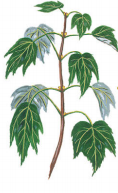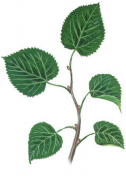biology review: test 1
4.8(11)
4.8(11)
Card Sorting
1/66
Earn XP
Description and Tags
this was everything we reviewed in class... would also know the formula for glucose and photosynthesis
Study Analytics
Name | Mastery | Learn | Test | Matching | Spaced |
|---|
No study sessions yet.
67 Terms
1
New cards
biology
the study of living things
2
New cards
organisms
any living things
3
New cards
botany
the study of plants
4
New cards
zoology
the study of animals
5
New cards
physiology
the study of physical structure and function of the human body
6
New cards
herbaceous
non-woody plant
7
New cards
taproot
one main root (stores food)
8
New cards
fibrous root system
many small roots (keeps in ground)
9
New cards
angiosperms
flowering seed plants (half of population of plants)
10
New cards
composite
known for not having petals; ray flowers and disk flowers (daisy)
11
New cards
rose family
family that has an open five-petal design
12
New cards
pea family
family that is used as food and forage; legumes
13
New cards
mint family
family that is used in cooking and landscaping and has square stems
14
New cards
annual
lives for one growing season
15
New cards
cashew family
family that contains the three most common poisonous plants
16
New cards
perennial
lives for several growing seasons
17
New cards
pea family
family that is used to prevent soil erosion
18
New cards
nitrogen cycle
the movement of nitrogen from air, into the soil, and back into the air
19
New cards
nightshade family
family that contains tomato, irish potato, pepper, eggplant, deadly nightshade, woody nightshade, tobacco, petunia; many are poisonous
20
New cards
grass
considered the most important group of plants on earth
21
New cards
monocots
* 1 cotyledon
* Parallel veins
* Petals in multiples of 3
* Fibrous root system
* Parallel veins
* Petals in multiples of 3
* Fibrous root system
22
New cards
dicots
* 2 cotyledons
* Broad, flat leaves with branching veins
* Petals in multiples of 4 or 5
* Taproot system
* Broad, flat leaves with branching veins
* Petals in multiples of 4 or 5
* Taproot system
23
New cards
stolon
a creeping stem that grows above the ground
24
New cards
grain
fruit of the flower cluster
25
New cards
wheat
corn
rice
corn
rice
what are the three most important cereal crops?
26
New cards
trees
the largest of all plants
27
New cards
deciduous
when trees lose their leaves
28
New cards
crown
the leaves of the tree
29
New cards
trunk
the main stem of the tree
30
New cards
catkins
flowers of some trees
31
New cards
samara
fruit of the maple trees
32
New cards
magnolias
symbol of the american south
33
New cards
birch
thin, smooth bark peels off in layers
34
New cards
sycamores
america’s largest deciduous tree
35
New cards
bracts
flowers like petals on a dogwood
36
New cards
system
a group of structures designed to function together as a unit to perform a particular job for an organism
37
New cards
shoot system
the part of the plant that is usually found above ground, holding the leaves toward the sun for the manufacturing of food and providing for the production of flowers, fruits, and seeds
38
New cards
organ
a structure within a system that has a definite form and performs a definite function or functions for the system
39
New cards
blade
flat portion of a leaf
40
New cards
bud
contain developing leaf or stem structures
41
New cards
compound leaves
more than one blade on every petiole
42
New cards
nodes
the points at which leaves grow from the stem
43
New cards
tissue
living material that is constructed in such a way as to perform a particular task for the organs of an organism
44
New cards
opposite
when two leaves grow from each node

45
New cards
alternate
only one leaf grows from each node in an alternating pattern up the branch

46
New cards
whorled
when there are three or more leaves growing from each node

47
New cards
xylem
transports water and dissolved minerals ***upward*** from the roots to the leaves
48
New cards
phloem
transports food manufactured in the leaves ***downward***
49
New cards
stipules
small leaf-like or scale-like structures that helped to cover the leaf when it was developing
50
New cards
petiole
the second major part of a typical leaf
51
New cards
margin
the edge of the blade
52
New cards
midrib
the large vein of the leaf
53
New cards
meristematic
plant tissue responsible for the growth and repair of plants
54
New cards
epidermis
provides covering and protection for both the upper and lower leaf surfaces
55
New cards
cuticle
consists of a waxy substance that helps to seal in water
56
New cards
stomata
tiny opening in the surface of a leaf that allows gases to enter and leave the leaf; also called leaf pore
57
New cards
parallel venation
leaf venation in which the veins are usually parallel to each other along the length of the leaf; monocots
58
New cards
pinnate
leaf venation in which the veins are in a branching pattern characterized by a midrib with smaller veins extending out from it
59
New cards
palmate
leaf venation in which two or more major veins extend outward from one point
60
New cards
cell
the basic structural unit of all living things
61
New cards
cell wall
found around the outside of the cell membrane
62
New cards
cellulose
a complex carbohydrate made up of long chains of glucose (a simple sugar) molecules
63
New cards
chlorophyll
the green pigment that gives plants their color and enables them to capture the energy of light
64
New cards
autotroph
organisms, such as green plants, that can make their own food; producers
65
New cards
heterotrophs
organisms that cannot make their own food and must obtain it from other organisms; consumers
66
New cards
photosynthesis
the process whereby a plant’s chloroplasts capture the radiant energy of light and convert it into the chemical energy of food
67
New cards
glucose
a simple sugar